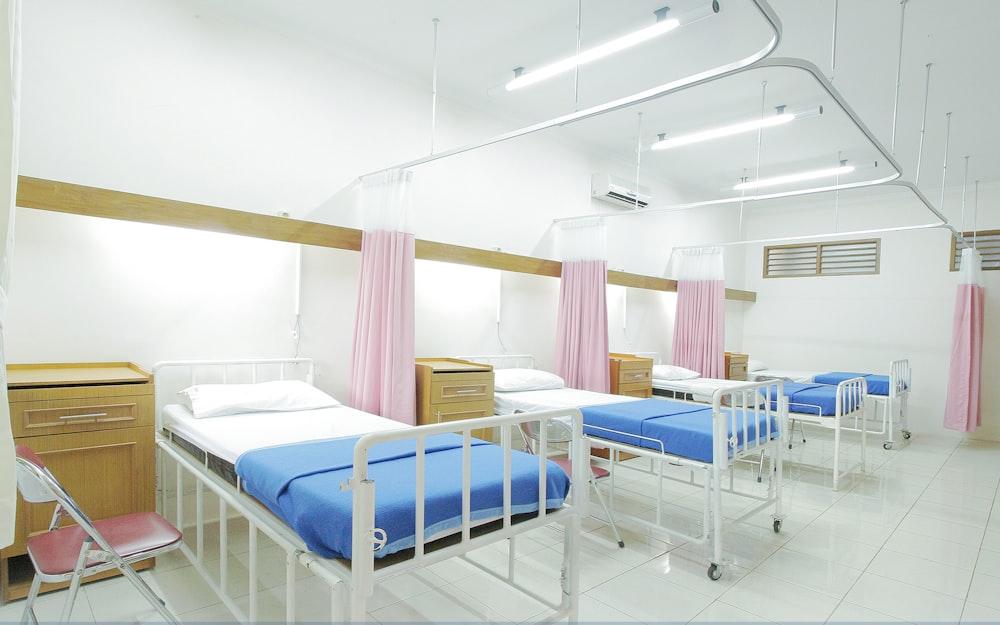目次
急性期病院でクライアントの身体活動量を増やすための方策
理学療法士・作業療法士の1つの役割として病棟でのクライアントの身体活動量を増加することが挙げられます.
回復期リハビリテーション病棟なんかでは理学療法士・作業療法士・言語聴覚士といったリハビリテーション専門職の関わる時間が最も長いといったデータもあり,理学療法士・作業療法士の果たす役割は大きいと思いますが,一方で急性期病院の場合にはどうでしょうか?
病状が安定しない時期には積極的な関わりが難しい場合も多いですよね.
今回は急性期病院でクライアントの身体活動量を増やすための方策を考えるうえで参考になる論文をご紹介させていただきます.

今回ご紹介する論文
Physiother Theory Pract. 2022 Aug 27;1-8. doi: 10.1080/09593985.2022.2112116. Online ahead of print.
Inpatient physical activity across a large university city hospital: a behavioral mapping study
Karin Valkenet 1 2, Prue McRae 3, Elja Reijneveld 2, Marielle Jans 4, Petra Bor 1, Lotte van Delft 1, Daniel L Young 5, Cindy Veenhof 1 2
Affiliations expand
PMID: 36036375 DOI: 10.1080/09593985.2022.2112116
今回ご紹介する論文は2022年に掲載された論文です.
研究の背景
Background: Physical inactivity is common during hospitalization. Physical activity has been described in different inpatient populations but never across a hospital.
入院中に身体活動が不足することはよくあります.
身体活動についてはさまざまな入院症例集団で報告されておりますが,病院全体で報告したものは見当たりません.
研究の目的
Purpose: To describe inpatient movement behavior and associated factors throughout a single university hospital.
この研究では単一の大学病院における入院例の運動行動とその関連要因を明らかにすることを目的としております.
研究の方法
Methods: A prospective observational study was performed. Patients admitted to clinical wards were included. Behavioral mapping was undertaken for each participant between 9AM and 4PM. The location, physical activity, daily activity, and company of participants were described. Barriers to physical activity were examined using linear regression analyses.
研究デザインは前向き観察研究となっております.
病棟に入院している症例を対象としております.
午前9時から午後4時の間に各対象者の行動マップを作成し,対象者の場所,身体活動,日常活動について調査が行われております.
身体活動に対する障壁は線形回帰分析を用いて検討しております.
研究の結果
Results: In total, 345 participants from 19 different wards were included. The mean (SD) age was 61 (16) years and 57% of participants were male. In total, 65% of participants were able to walk independently. On average participants spent 86% of observed time in their room and 10% of their time moving. A physiotherapist or occupational therapist was present during 1% of the time, nursing staff and family were present 11% and 13%, respectively. Multivariate regression analysis showed the presence of an intravenous line (p = .039), urinary catheter (p = .031), being female (p = .034), or being dependent on others for walking (p = .016) to be positively associated with the time spent in bed. Age > 65, undergoing surgery, receiving encouragement by a nurse or physician, reporting a physical complaint or pain were not associated with the time spent in bed (P > .05).
19の異なる病棟の合計345例が対象となりました.
平均(SD)年齢は61(16)歳で対象者の57%が男性でありました.
また対象者の65%が自立歩行が可能でありました.
平均して対象者は観察時間の86%を自室で過ごし,10%を移動しておりました.
理学療法士や作業療法士がいた時間は1%,看護師が11%,家族が13%でありました.
多変量回帰分析の結果,静脈ラインの有無(p=0.039),尿道カテーテルの有無(p=0.031),女性であること(p=0.034),歩行に介助が必要であること(p=0.016)がベッド上での滞在時間と正の関連があることが示されました.
年齢が65歳以上,手術を受けている,看護師や医師から励ましを受けている,身体的な不満や痛みを訴えていることは,ベッド上での滞在時間と関連しておりませんでした(P > 0.05).
研究の結論
Conclusion: As family members and nursing staff spend more time with patients than physiotherapists or occupational therapists, increasing their involvement might be an important next step in the promotion of physical activity.
家族および看護職員は理学療法士や作業療法士よりもクライアントと共に過ごす時間が長いため,看護師の関与を高めることが身体活動促進のための重要な次のステップとなる可能性があります.
今回は急性期病院でクライアントの身体活動量を増やすための方策を考えるうえで参考になる論文をご紹介させていただきました.
結局のところ理学療法士・作業療法士がどのくらいの時間を関われるかですが,こういった結果を見ると理学療法士・作業療法士の関わりというのはたったの1%にすぎないわけですね.
いかに理学療法士・作業療法士が関わらない場面での身体活動量を増加させるかが重要になりそうですね.
また今回の結果から考えると看護師の関わる時間が長いわけですから看護師との連携も必須となりそうですね.






